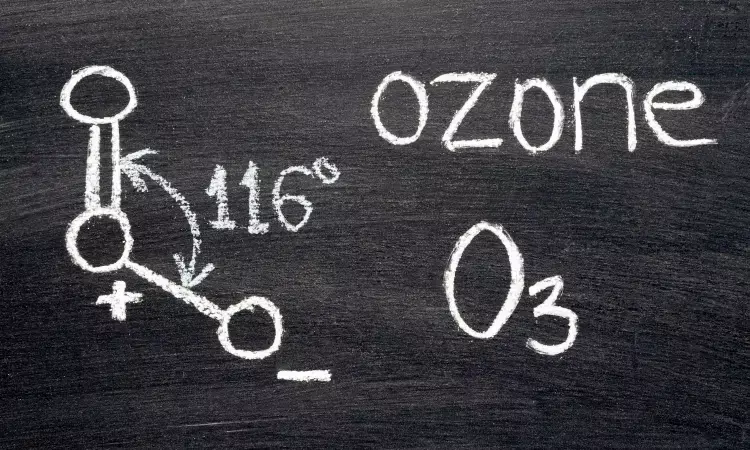- Home
- Medical news & Guidelines
- Anesthesiology
- Cardiology and CTVS
- Critical Care
- Dentistry
- Dermatology
- Diabetes and Endocrinology
- ENT
- Gastroenterology
- Medicine
- Nephrology
- Neurology
- Obstretics-Gynaecology
- Oncology
- Ophthalmology
- Orthopaedics
- Pediatrics-Neonatology
- Psychiatry
- Pulmonology
- Radiology
- Surgery
- Urology
- Laboratory Medicine
- Diet
- Nursing
- Paramedical
- Physiotherapy
- Health news
- Fact Check
- Bone Health Fact Check
- Brain Health Fact Check
- Cancer Related Fact Check
- Child Care Fact Check
- Dental and oral health fact check
- Diabetes and metabolic health fact check
- Diet and Nutrition Fact Check
- Eye and ENT Care Fact Check
- Fitness fact check
- Gut health fact check
- Heart health fact check
- Kidney health fact check
- Medical education fact check
- Men's health fact check
- Respiratory fact check
- Skin and hair care fact check
- Vaccine and Immunization fact check
- Women's health fact check
- AYUSH
- State News
- Andaman and Nicobar Islands
- Andhra Pradesh
- Arunachal Pradesh
- Assam
- Bihar
- Chandigarh
- Chattisgarh
- Dadra and Nagar Haveli
- Daman and Diu
- Delhi
- Goa
- Gujarat
- Haryana
- Himachal Pradesh
- Jammu & Kashmir
- Jharkhand
- Karnataka
- Kerala
- Ladakh
- Lakshadweep
- Madhya Pradesh
- Maharashtra
- Manipur
- Meghalaya
- Mizoram
- Nagaland
- Odisha
- Puducherry
- Punjab
- Rajasthan
- Sikkim
- Tamil Nadu
- Telangana
- Tripura
- Uttar Pradesh
- Uttrakhand
- West Bengal
- Medical Education
- Industry
Early-Life Ozone Exposure Linked to Childhood Asthma and Wheeze: JAMA

Researchers have found in a new study from JAMA Network Open that exposure to ozone (O3) early in life is associated with increased risk of asthma and wheeze in young children, especially when combined with other air pollutants. The study, across 6 US cities, shown that children with more exposure to O₃ in their first two years of life had greater odds of asthma and wheeze ages 4-6. These results signal the importance of re-evaluating air quality standards to act for the protection of children from respiratory illness early in life. The study was conducted by Logan C. and fellow researchers.
This was a prospective cohort study that analyzed data from the ECHO-PATHWAYS consortium (2007-2023) utilizing data from 1,188 children from six U.S. cities. Participants were selected if they met the following criteria: had completed airway surveys, were born full-term (gestational age at least 37 weeks) and had full address history from birth to age 2 years.
Researchers evaluated ozone exposure using a spatiotemporal model derived from residential address histories. They employed logistic regression models and Bayesian kernel machine regression (BKMR) analyses to evaluate utter independent and interaction effects of O₃, fine particulate matter (PM₂.₅), and nitrogen dioxide (NO₂) on asthma and wheeze. Adjustments were made for child anthropometric characteristics, family socioeconomic status, and neighborhood factors to account for potential confounding association.
Key Findings
• Ozone Exposure and AsthmaThe mean (SD) ozone concentration among exposed children was 26.1 (2.9) ppb.
• Among children aged 4 to 6 years, asthma was reported by 148 (12.3%) children, and wheeze was reported by 190 (15.8%) children.
• A 2 ppb increase in ozone exposure conferred 31% higher odds of current asthma (OR: 1.31; 95% CI, 1.02-1.68) and 30% higher odds of wheeze (OR: 1.30; 95% CI, 1.05-1.64).
• At ages 8-9 years, ozone exposure was not substantially associated with asthma or wheeze, suggesting that the effects of early life exposure may be more pronounced with respect to respiratory health in younger children.
• According to the BKMR analysis, the association between ozone and asthma and wheeze exposure appeared stronger when modeled as part of an air pollution co-mixture that included NO₂ and PM₂.₅.
• The children had a mean (SD) age of 4.5 (0.6) years at the first airway survey.614 (51.7%) were female, and 663 (55.8%) of mothers had a bachelor’s degree or above.
Early-life exposure to O₃ might cause asthma and wheeze via several mechanisms such as airway inflammation, immune system disruption, interactions with other pollutants, and developmental characteristics.
The study authors concluded that childhood asthma and wheeze risk substantially increased with early-life ozone exposure, particularly among children 4-6 years old. To decrease the prevalent public health burden of childhood asthma, decreasing ambient ozone exposure might be an effective measure for protecting children's respiratory health.
Reference:
Dr Riya Dave has completed dentistry from Gujarat University in 2022. She is a dentist and accomplished medical and scientific writer known for her commitment to bridging the gap between clinical expertise and accessible healthcare information. She has been actively involved in writing blogs related to health and wellness.
Dr Kamal Kant Kohli-MBBS, DTCD- a chest specialist with more than 30 years of practice and a flair for writing clinical articles, Dr Kamal Kant Kohli joined Medical Dialogues as a Chief Editor of Medical News. Besides writing articles, as an editor, he proofreads and verifies all the medical content published on Medical Dialogues including those coming from journals, studies,medical conferences,guidelines etc. Email: drkohli@medicaldialogues.in. Contact no. 011-43720751


